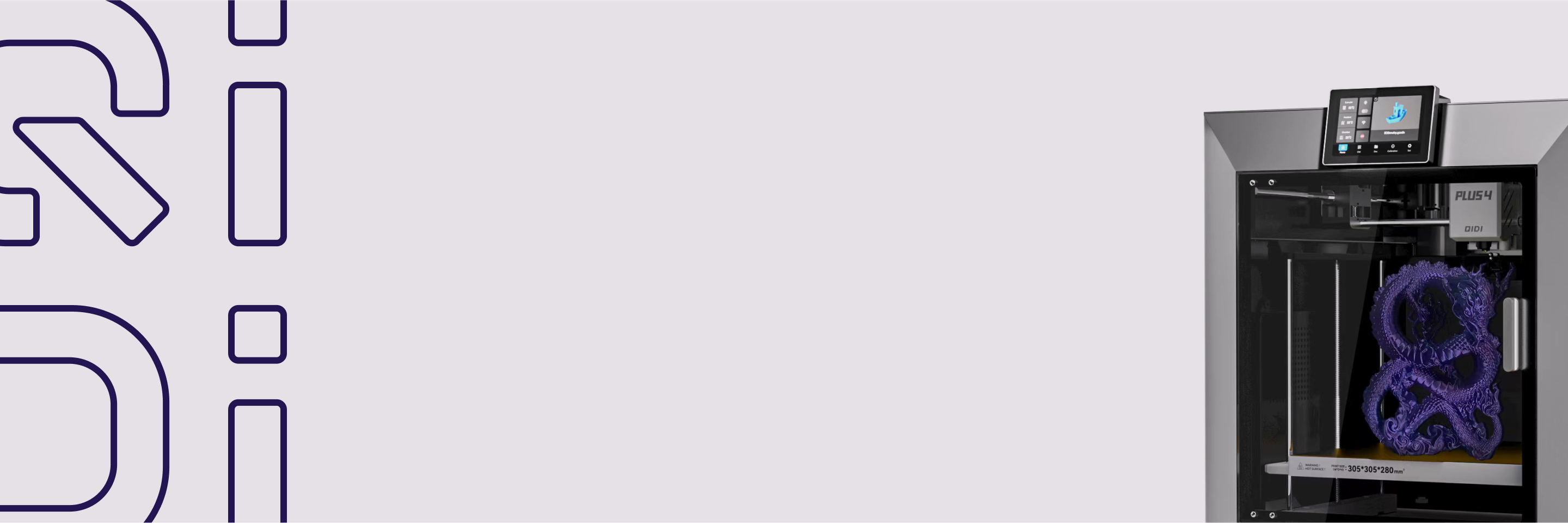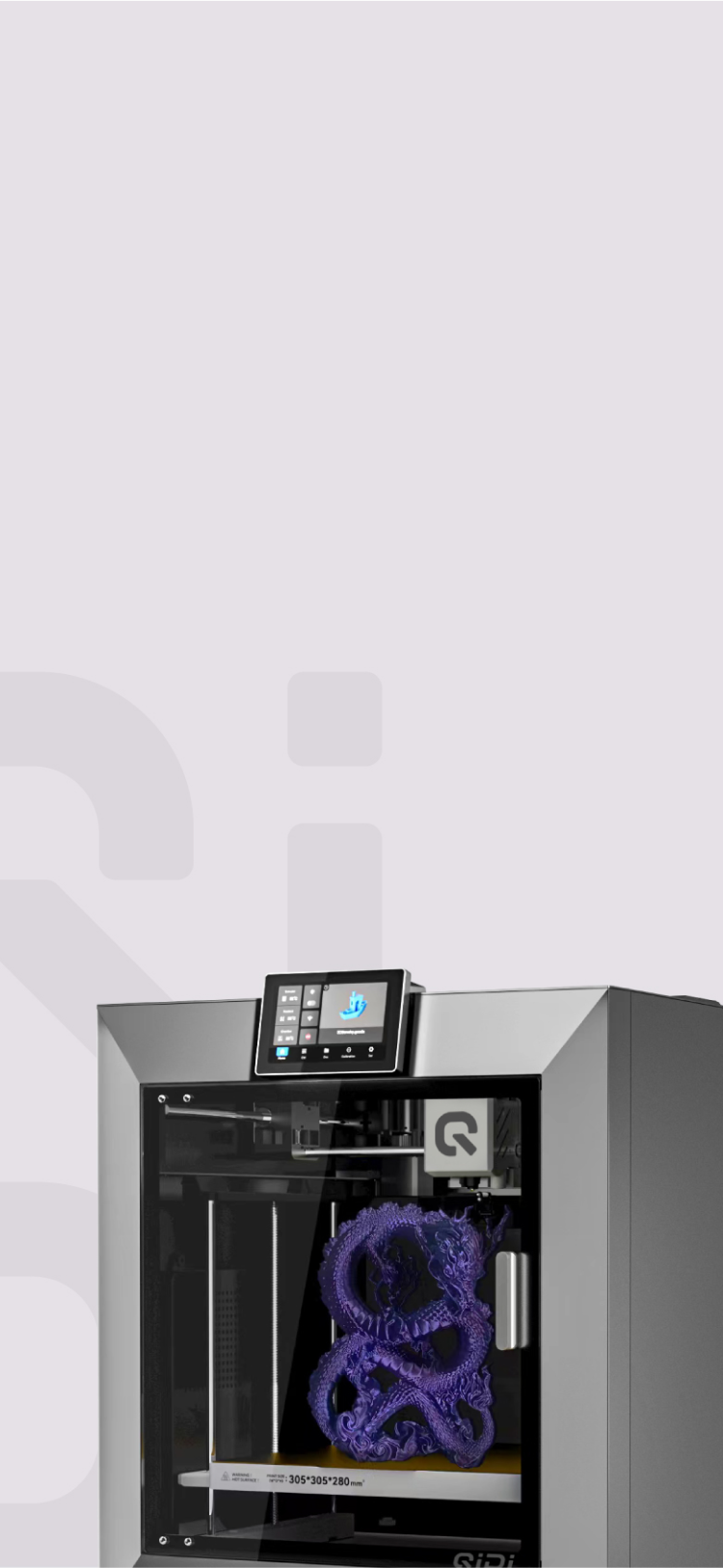Can a 3D Printer Make Building Blocks at Home?


You want snug, repeatable snap fits, smooth edges that feel safe in small hands, and blocks that survive everyday drops. Home printing makes this possible when the workflow controls heat, geometry, and emissions. With an enclosed 3D printer, a stable chamber, and a few precise slicer tools, you can tune tolerances, improve layer bonding, and produce stacks that click together cleanly and stay that way.
Can You Really Make Building Blocks with a 3D Printer?
Yes. The key is process control. A QIDI enclosed system with active chamber heating around 65 °C keeps corners from lifting, and a high-temperature nozzle up to 370 °C opens the door to stronger filaments. Load-cell leveling and a zero-offset first layer improve dimensional consistency across the whole plate. Inside QIDI Studio, XY hole or contour compensation lets you nudge stud and socket sizes by hundredths of a millimeter. Elephant-foot compensation trims any first-layer flare that makes bases feel wide.
A quick feasibility check helps before you commit to full sets:
- Print a 30 mm calibration cube and measure each axis. Record any offset.
- Run a single-wall thickness test to confirm flow settings match the nozzle.
- Make a five-step “clearance ladder” sample with 0.10–0.30 mm offsets, then choose the snap that feels right.
When these small controls are in place, interlocking parts from a QIDI 3D printer stack straight, pull apart without whitening, and repeat across colors and batches.

Best Materials for 3D Printed Building Blocks
Material choice sets the tone for snap feel, edge definition, and heat resistance. Think about play style and storage. A set that lives near a sunny window needs higher softening resistance than a set used at a cool desk. For home projects, three families cover most needs for 3D printed toys.
How they compare in practice
Tips for consistency across a big batch:
- Stick to one filament line and color family for production runs.
- Dry moisture-sensitive spools before a long print day.
- Keep a small card with nozzle temp, chamber temp, and XY compensation for each color you use.
How to Design and Print Interlocking Blocks at Home
Start with a simple module, test fits quickly, then scale. A clear path keeps time and material waste low while helping the set feel uniform.
Shape the geometry with clearance in mind
Model studs and sockets with an intentional gap. For small parts, many makers begin around 0.20 mm total clearance. For larger footprints or multi-stud plates, try 0.30–0.40 mm. Add small chamfers or fillets so parts guide themselves during assembly. Keep wall sections around studs thick enough to resist hoop stress during the push fit.
Calibrate before production
In QIDI Studio, verify first-layer height with a live Z test, print a flow calibration, then apply XY hole or contour compensation to correct small oversize or undersize tendencies. If the base looks slightly wider than the model, add a small elephant-foot compensation so edges stay true.
Lock in durable print settings
Use 3 or 4 perimeters around studs and sockets to improve hoop strength. Set infill between 40 and 60 percent for structural pieces; go lighter for decorative caps. A 0.16–0.20 mm layer height balances surface quality and speed. Keep the chamber warm and avoid opening the door during prints, since sudden drafts can move the fits.
Validate with a fast test ladder
Place five tiny blocks on one plate, each with a different XY compensation or modeled clearance. After printing, evaluate by hand. You want a clean push with firm retention and no whitening at corners. Note the winner on a sticky label and save the coupon in a “fits” box for later reference.
Plan for batches and color changes
Print parts in the same orientation to keep thermal history consistent. When changing colors, run a single coupon to confirm the fit still lands in the target range. If you keep spare 3D printer parts like nozzles and PTFE pieces, log their hours so you replace them before a big production weekend.

Finish cleanly
Deburr with a fine file or a soft blade pass, rinse with mild soap and water, and dry fully. Avoid solvent smoothing for pieces used by young children. A quick tumble in warm soapy water also removes any fine dust left from support removal.
Safety and Durability of 3D Printed Blocks
Home projects deserve clear safety habits. Hotter filaments can release ultrafine particles and volatile compounds, so give the printer a room with steady ventilation. An enclosed machine with defined filtration helps reduce exposure during long jobs. Keep the door closed during prints, then let parts sit in the chamber a few minutes before opening, which also reduces warp risk.
Think about mechanical safety as well:
- Round edges that fingers touch often. Sharp corners look neat in CAD but feel harsh in play.
- Avoid small components in homes with toddlers. Follow the spirit of a choke-tube check and keep sub-assemblies large enough to pass through only with resistance.
- Increase wall count around studs, then orient parts so layer lines resist the direction of pull during a snap.
- Clean pieces with mild soap and water after any sanding, since fine dust can linger on surfaces. Simple home tests raise confidence:
- Stack ten blocks on a flat table, press gently from two opposite corners, and watch for rocking or early crack lines.
- Drop test from about 3–4 ft onto a hard surface and check corners and sockets for whitening or splits. Replace any part that shows early stress marks.
- Leave a sample on a sunny sill for a few hours and check for softening or creep; this quick check reveals if the filament suits warm rooms.
If you plan to sell or donate sets intended for children, read the toy safety requirements for your market. In the United States, toys for young children must meet defined mechanical and chemical limits, and labs verify compliance. For the European market, material rules include element migration limits. Home use for family projects is different, yet the same mindset helps: clean design, stable materials, and tidy finishing.
Make Your 3D Printed Blocks Production Ready
A well-set-up QIDI 3D printer can produce blocks that click, stack, and last. The path is straightforward. Choose a filament that matches the play environment. Model intentional clearance, then use QIDI Studio tools to dial XY fit and trim first-layer flare. Validate with small test ladders, increase perimeters where studs work the hardest, and keep the chamber warm for consistent dimensions. Clean the edges, run a few quick durability checks, and store your best coupons for future reference. With this workflow, home-printed sets grow from a handful of prototypes into a reliable family activity that you can expand any time the toy bin needs fresh pieces.
5 FAQs about 3D‑Printed Interlocking Blocks
Q1. How do I keep block dimensions consistent months after the first batch?
Create a master go/no-go gauge and store it with your project. Every month, check belt tension, re-verify first-layer height, and print a single clearance coupon. Replace worn nozzles early. Log chamber temperature, XY compensation, and filament humidity for every run.
Q2. Can heat treatment improve the strength or heat resistance of printed blocks?
Yes, with care. For PLA, place parts on a flat, sand-filled tray and bake at 80–90 °C for 20–30 minutes, then cool slowly. Expect 1–3% dimensional change, so re-validate fits. ABS and ASA gain little from annealing and risk warping.
Q3. What’s a durable way to add graphics, letters, or logos to blocks?
Use shallow inlays or embossed features designed in CAD. For post-print decoration, apply acrylic paint in thin coats and seal with a water-based polyurethane. Vinyl decals work if the edges are rounded. Test adhesion on scrap parts before decorating an entire set.
Q4. How should I clean and sanitize printed blocks used by kids?
Wash with warm water and mild dish soap, then air-dry fully. For extra sanitation, wipe with 70% isopropyl alcohol and allow complete evaporation. Avoid dishwashers that exceed the material’s heat tolerance. Skip aggressive solvents. Inspect regularly for cracks or loose fragments.
Q5. May I sell compatible interlocking blocks I print at home?
Check local intellectual-property rules before selling. Many foundational brick patents have expired, yet trademarks and distinctive designs can still be protected. Do not use protected brand names or logos. Meet toy safety requirements in your market and keep documentation from accredited testing.


 Q2
Q2





